Rome, the Eternal City, is not only the capital of modern Italy but also the heart of the ancient Roman Empire, one of the most powerful civilizations in human history. Over thousands of years, Rome has witnessed the rise and fall of empires, the development of religion, art, and architecture, leaving an indelible mark throughout the city. Today, Rome is a living museum, where past and present intertwine, attracting millions of visitors each year to explore its magnificent historical sites. These ancient architectural wonders are not just silent stones; they are living witnesses telling epic and tragic stories of a bygone era. Join “Du lịch khắp thế gian” (Travel Around the World) to discover the key historical landmarks in Rome, where every step is a journey back in time, touching the soul of history.
1. Colosseum
The Colosseum, also known as the Roman Coliseum, is an undeniable symbol of Rome and the Roman Empire. Built in the 1st century AD, under Emperor Vespasian and completed by his son Titus, this amphitheater is not only a magnificent architectural structure but also a historical stage where bloody gladiatorial contests, public competitions, and other grand events took place.
Standing over 50 meters tall, 156 meters wide, and 189 meters long, the Colosseum could hold up to 50,000 spectators from all social classes who came to witness thrilling and sometimes brutal performances. Beneath the main arena floor lies the complex hypogeum system, a maze of tunnels, rooms, and animal cages where gladiators, slaves, and wild animals were prepared before entering the arena.
Today, despite thousands of years and the impact of nature and history, the Colosseum still stands as a testament to the power and advanced construction techniques of the ancient Romans. Standing in the vast arena, visitors can feel the vibrant atmosphere, the roar of the crowd, and the tension of the battles that once took place here. The Colosseum is not just a historical relic but also an unforgettable travel experience, taking you back to the glorious era of the Roman Empire.

2. Pantheon
The Pantheon, meaning “temple of all gods” in Greek, is an ancient Roman architectural marvel that is almost perfectly preserved to this day. Rebuilt in the 2nd century AD under Emperor Hadrian, the Pantheon is not only a religious temple but also an architectural masterpiece, showcasing the sophistication and ingenuity of the Romans.
The most remarkable feature of the Pantheon is its massive dome, a technical feat at the time. This dome held the record for the world’s largest unreinforced concrete dome for 13 centuries. At the apex of the dome is a single circular opening called the oculus, which serves to provide natural light and ventilation to the interior space. The oculus is not only a unique architectural element but also carries symbolic meaning, connecting humans with the gods and the cosmos.
Inside the Pantheon, the vast and solemn space is created by rows of Corinthian columns and magnificent marble walls. Light from the oculus streams down, creating magical lighting effects that change throughout the day. Originally a temple dedicated to Roman gods, the Pantheon was later converted into a Catholic church in the 7th century, which helped preserve it through the centuries. Today, the Pantheon is not only a famous tourist attraction but also an active church where visitors can admire its unique architectural beauty and feel the sacred space.
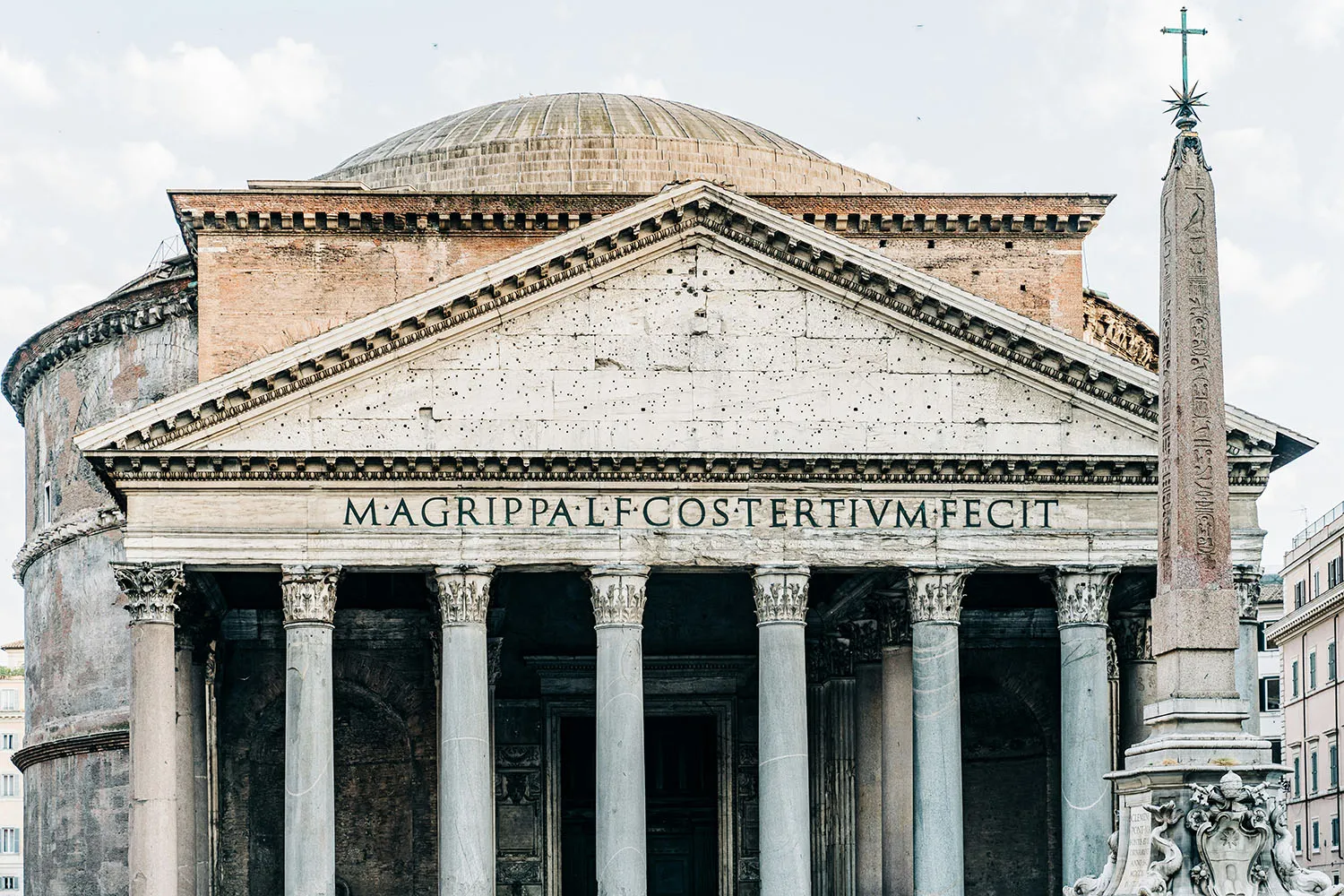
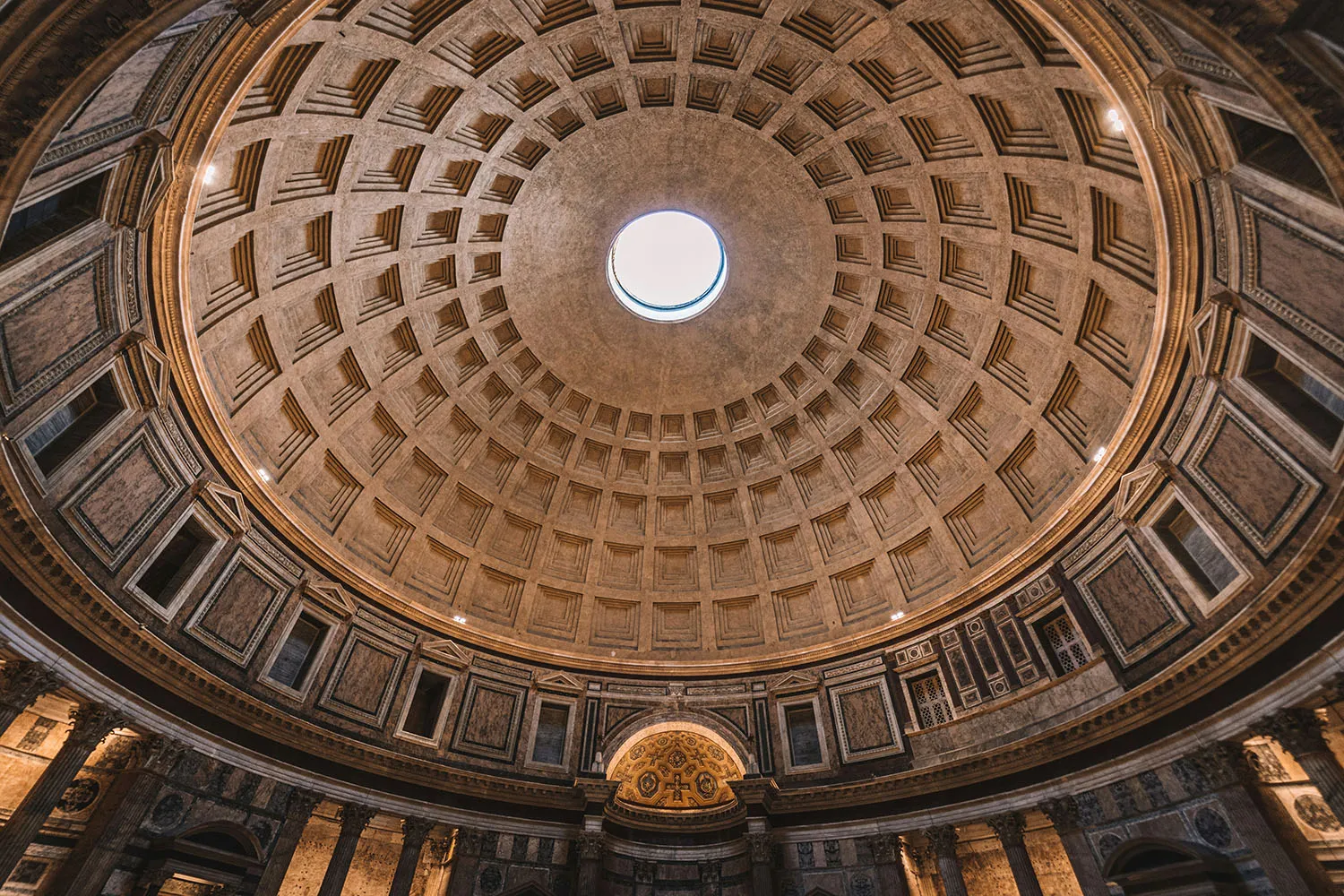
3. Spanish Steps (Piazza di Spagna)
The Spanish Steps, or Piazza di Spagna, famous for its magnificent Spanish Steps, is one of the most beautiful and famous squares in Rome. These 135 steps were built in the early 18th century, connecting the piazza area with the Trinità dei Monti church at the top of the hill. The name “Spanish Steps” originates from the fact that this area was once the location of the Spanish Embassy.
The Spanish Steps are not only an impressive architectural structure but also a vibrant public space where locals and tourists regularly gather, relax, and enjoy the city’s atmosphere. In spring, especially in May, the steps are decorated with thousands of colorful azaleas, creating a romantic and charming scene.
Piazza di Spagna is also the center of many cultural events and festivals, an ideal place for visitors to watch people passing by, enjoy coffee at roadside cafes, and feel the vibrant rhythm of Rome. Surrounding the square are high-end fashion boutiques, famous eateries, and restaurants, making it an unmissable destination when traveling to Rome.
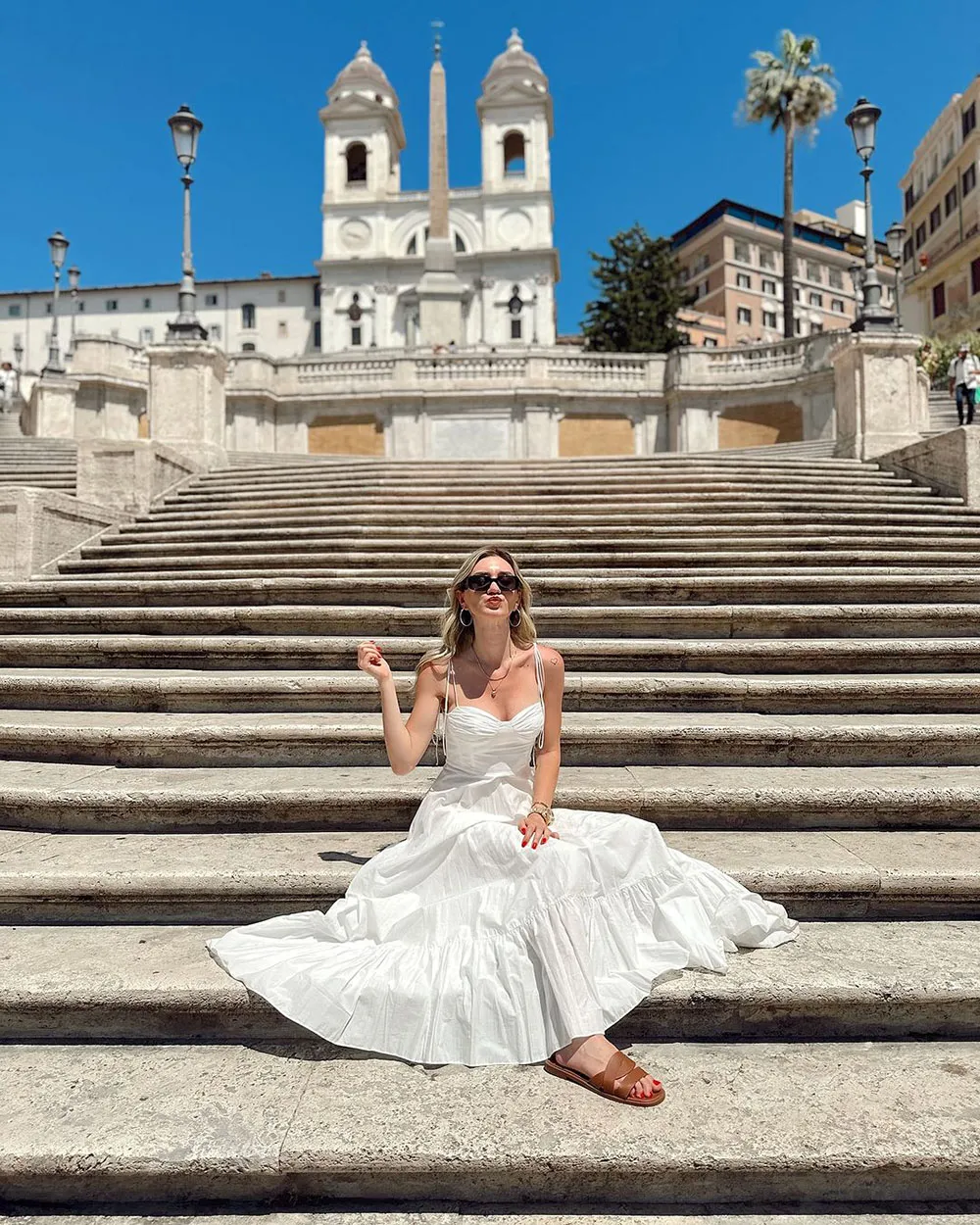
4. St. Peter’s Basilica
St. Peter’s Basilica, located in Vatican City, a small independent state in the heart of Rome, is one of the most important and largest churches in the Catholic world. Built on the site believed to be where St. Peter, one of Jesus’s 12 apostles and the first Pope, was buried, St. Peter’s Basilica is not only a religious structure but also a masterpiece of Renaissance and Baroque art and architecture.
The construction of St. Peter’s Basilica spanned over a century, involving many of history’s greatest architects and artists, including Michelangelo, Bramante, Raphael, and Bernini. The basilica’s majestic facade, massive dome, and magnificent interior space are decorated with countless sculptures, paintings, and intricate reliefs.
One of the most prominent highlights inside the Basilica is Michelangelo’s Pietà, a sublime sculpture depicting the Virgin Mary cradling the body of Jesus after the crucifixion. The basilica’s dome, designed by Michelangelo, rises over 100 meters high, a marvel of architecture and a symbol of the grandeur and majesty of the Catholic Church. St. Peter’s Basilica is not only an important pilgrimage site but also an attractive tourist destination, drawing millions of visitors each year to admire its beauty and sacredness.
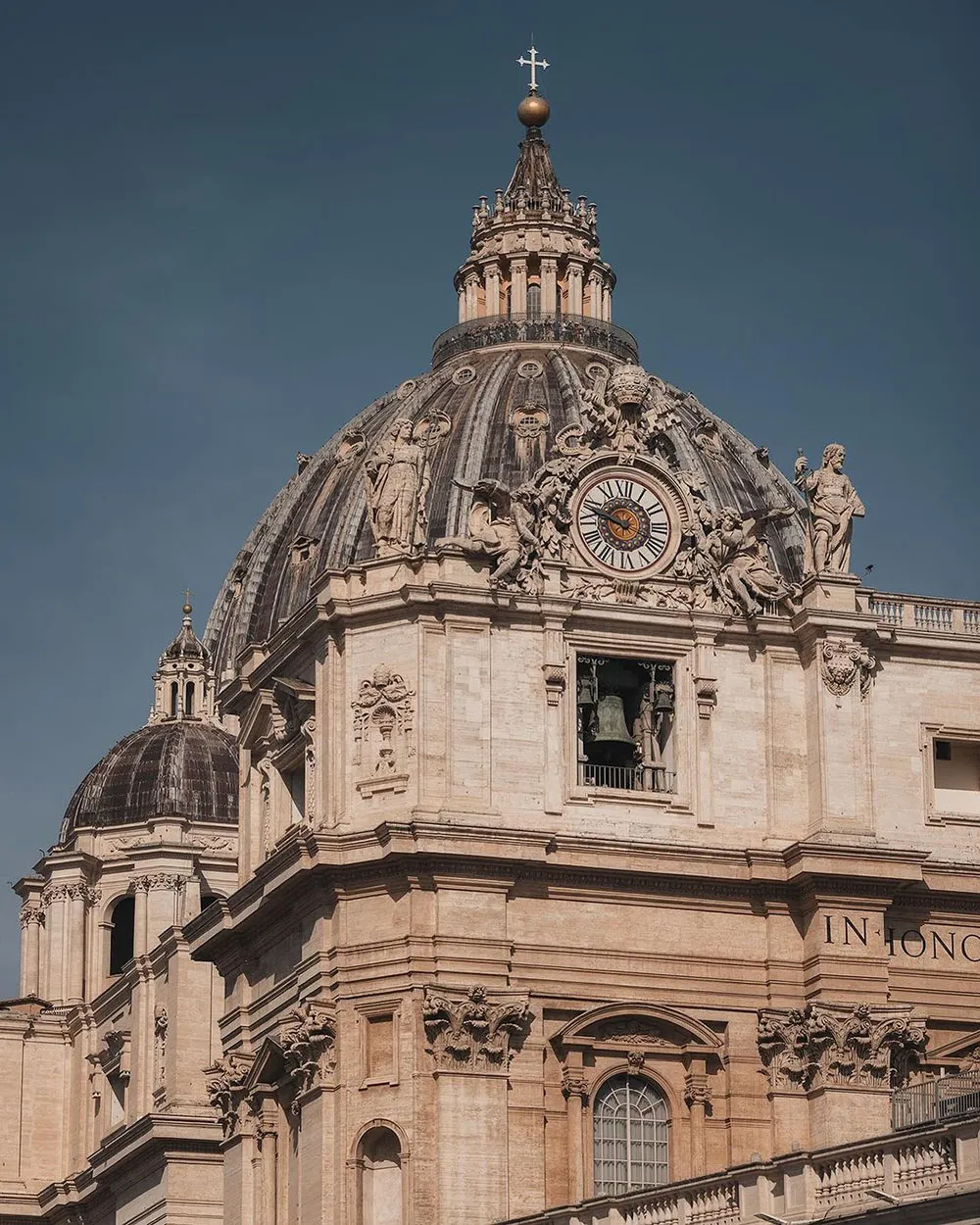
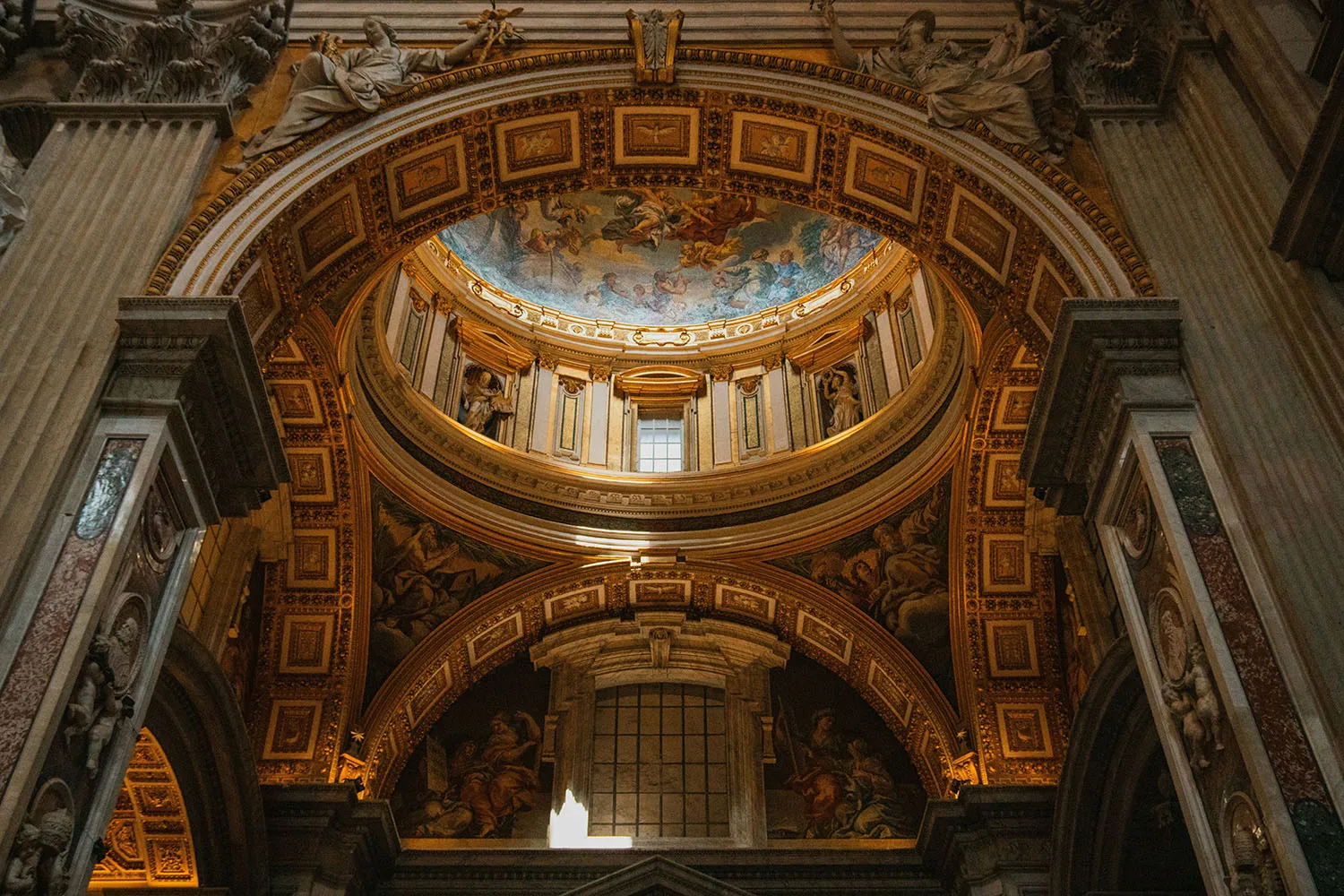
5. Vatican Museums
The Vatican Museums are a complex of art and culture museums located within Vatican City, one of the largest and most important museums in the world. Covering an area of over 42,000 square meters, the Vatican Museums house an immense collection of artworks and historical artifacts collected by the Catholic Church and Popes over centuries.
The Vatican Museums’ collection includes classical sculptures, paintings, tapestries, ceramics, maps, and many other art forms, ranging from ancient Egypt to contemporary art. One of the most popular tourist attractions of the Vatican Museums is the Sistine Chapel, famous for its stunning frescoes on the ceiling and walls by Michelangelo and other Renaissance artists. Michelangelo’s frescoes “The Creation of Adam” and “The Last Judgment” on the ceiling and walls of the Sistine Chapel are considered masterpieces of human art.
In addition to the Sistine Chapel, the Vatican Museums have many other impressive exhibition spaces such as the Raphael Rooms, the Vatican Library, the Gregorian Egyptian Museum, and many other specialized collections. Visiting the Vatican Museums is a journey of art and history spanning centuries, offering visitors profound and unforgettable cultural experiences.
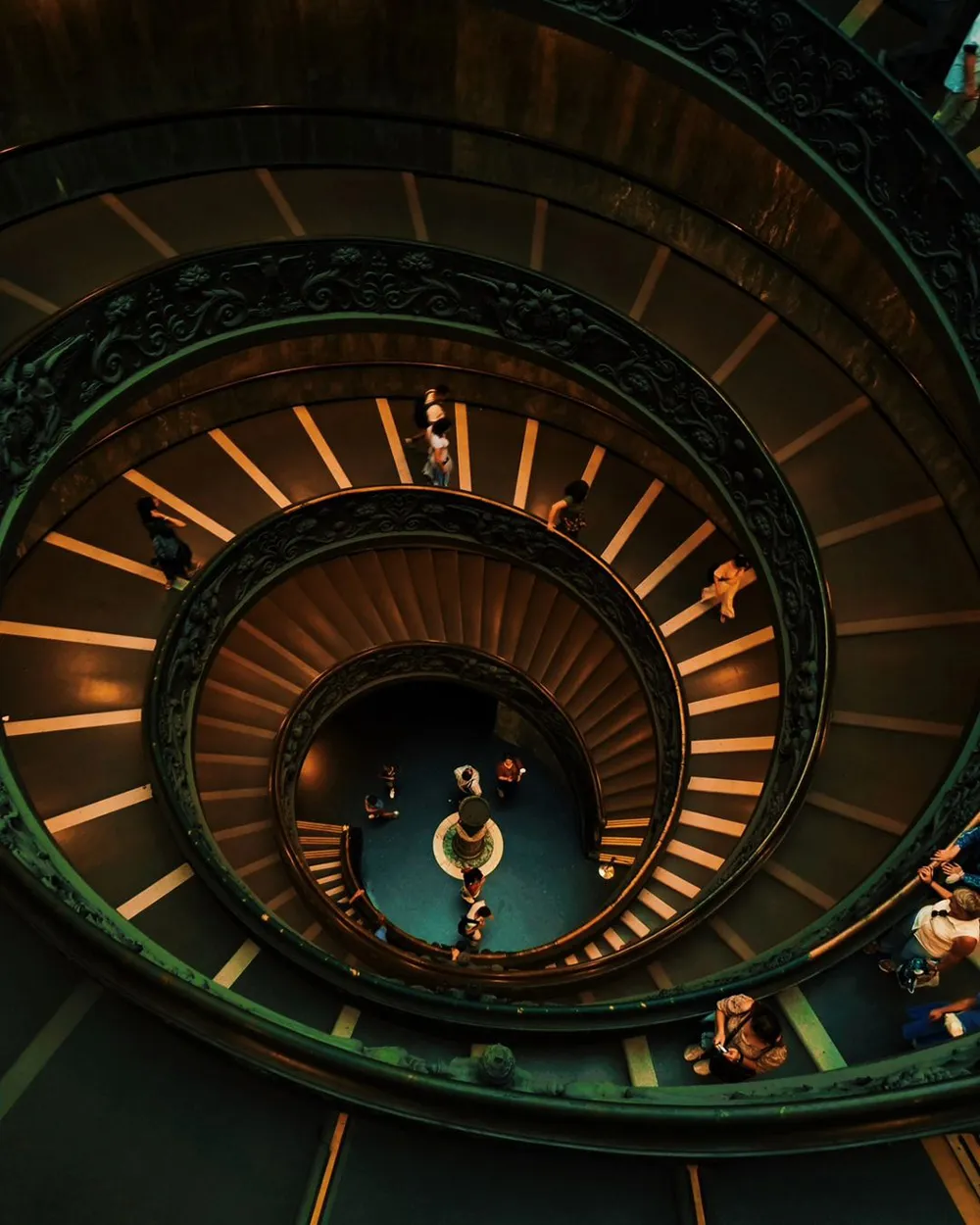
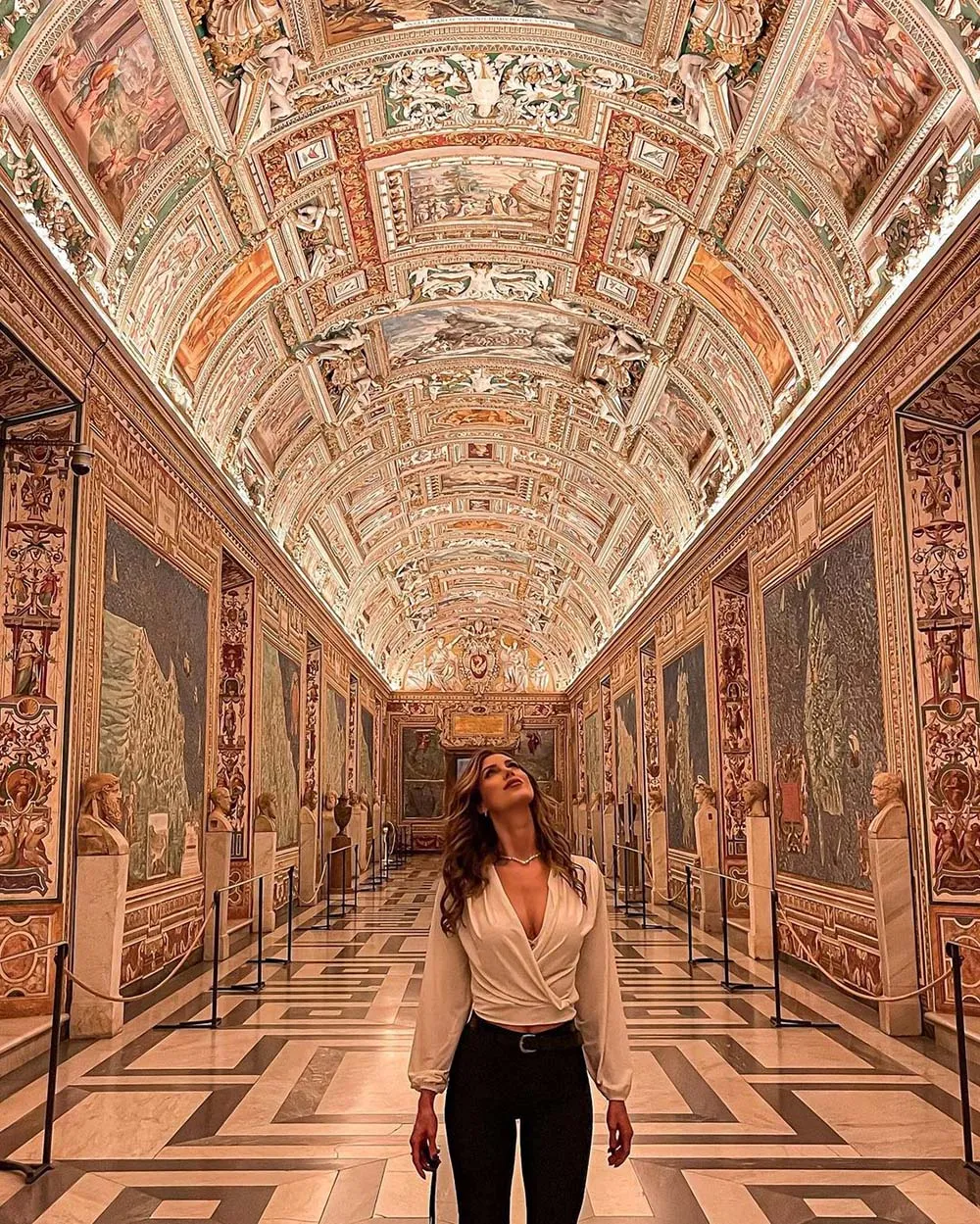
6. Roman Forum
The Roman Forum, or Forum Romanum, was the political, religious, and commercial center of ancient Rome. Located in a valley between the Palatine and Capitoline Hills, the Forum was once the heart of the Roman Empire, where the city’s most important activities took place, from triumphal parades and court trials to religious ceremonies and commercial activities.
Today, the Roman Forum is a vast archaeological site, including the ruins of many important architectural structures such as temples, basilicas, arches, and other public buildings. Walking among these ruins, visitors can imagine the bustle and vibrancy of ancient Roman life. Notable structures in the Forum area include the Arch of Septimius Severus, the Temple of Saturn, the Temple of Vesta, the Basilica of Maxentius and Constantine, and the Curia Julia (Roman Senate House).
The Roman Forum is not only an important historical site but also a unique open space where visitors can freely explore and learn about Rome’s glorious past. This area is often the starting point for exploring Roman history, connecting with nearby sites such as the Palatine Hill and the Colosseum, creating a comprehensive historical travel experience.
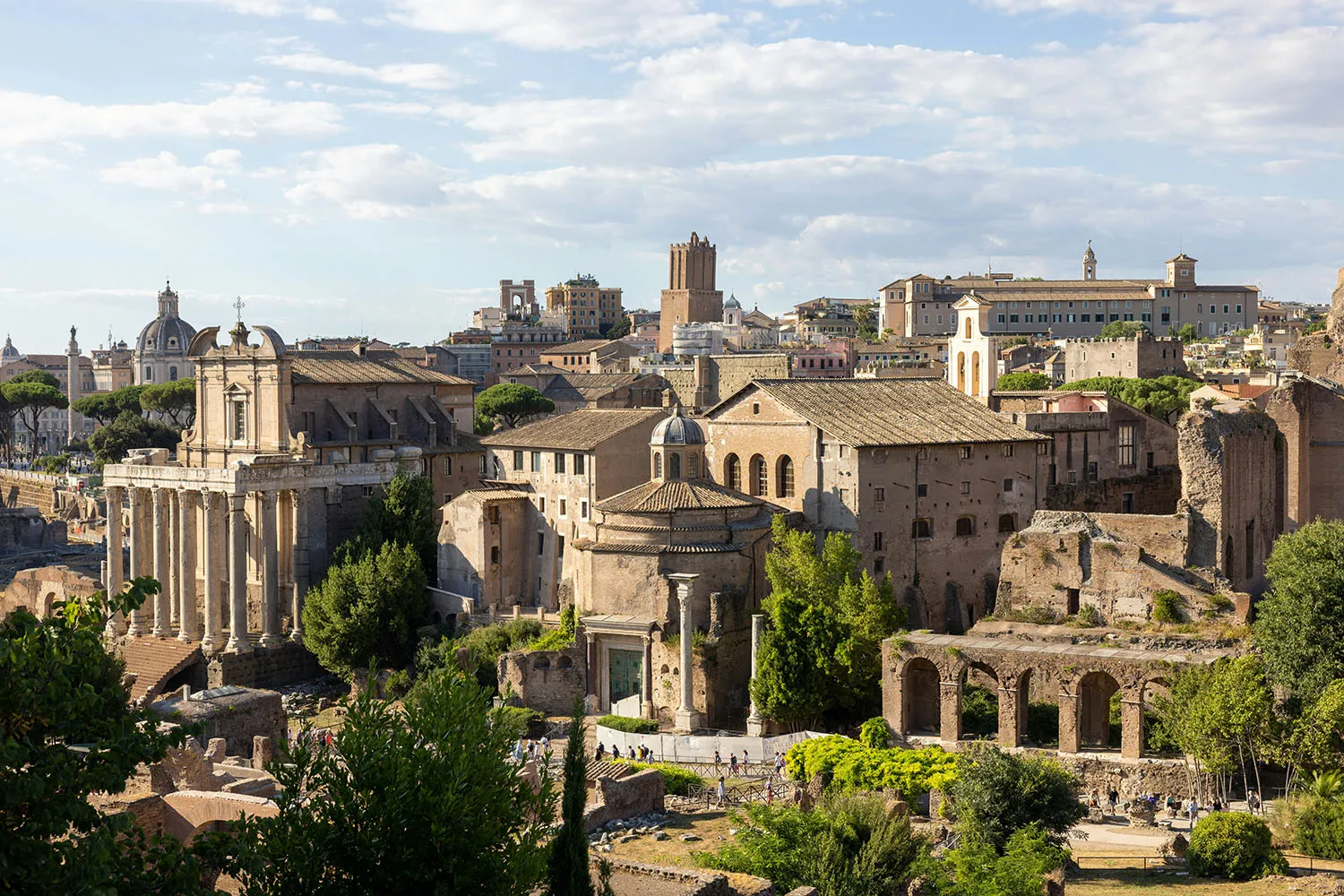
7. Trevi Fountain (Fontana di Trevi)
The Trevi Fountain, or Fontana di Trevi, is the most famous and largest Baroque fountain in Rome. Built in the 18th century by architect Nicola Salvi, this fountain is not only a beautiful architectural work but also a cultural and tourist icon of Rome.
The highlight of the Trevi Fountain is the majestic statue of Neptune, god of the sea, riding a chariot pulled by Tritons, symbolizing the power and authority of the ocean. Surrounding the god statue are other intricate sculptures depicting mythological figures and natural elements. The Trevi Fountain is built against the facade of Palazzo Poli, creating a harmonious and impressive architectural ensemble.
The Trevi Fountain is famous not only for its architectural beauty but also for its coin-tossing tradition. According to legend, if you throw a coin into the fountain, you will have the opportunity to return to Rome. Throwing two coins means you will find love in Rome, and throwing three coins means you will marry the one you love. This tradition has attracted millions of visitors to the Trevi Fountain each year, making it an unmissable destination when visiting Rome.

8. Piazza Navona
Piazza Navona is one of the most beautiful and vibrant squares in Rome. This square was built on the site of the ancient Stadium of Domitian, still retaining the stadium’s characteristic oval shape. Piazza Navona is a typical example of Baroque architectural style, with three large fountains and many ancient buildings surrounding it.
The central fountain of the square, Fontana dei Quattro Fiumi (Fountain of the Four Rivers), is a masterpiece by Bernini, with four giant statues representing the four major rivers of the world in the 17th century: the Nile (Africa), the Danube (Europe), the Ganges (Asia), and the Rio de la Plata (Americas). The other two fountains at either end of the square, Fontana del Nettuno (Neptune Fountain) and Fontana del Moro (Moor Fountain), are also impressive Baroque sculptures.
Piazza Navona is not only an attractive tourist destination but also an important cultural and social space in Rome. The square is always bustling with street artists, cafes, restaurants, and souvenir shops, creating a lively and joyful atmosphere.
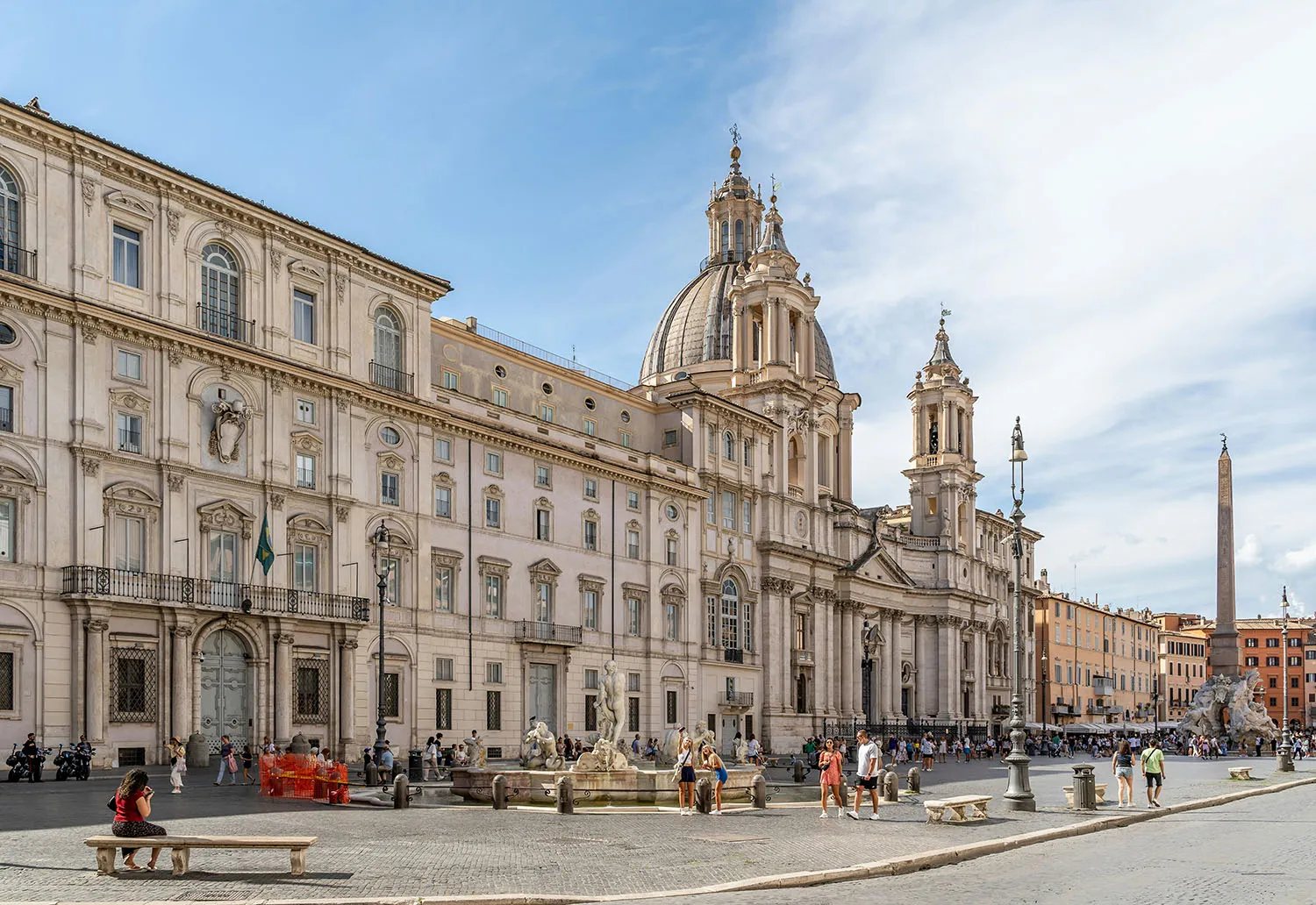

9. Castel Sant’Angelo
Castel Sant’Angelo was originally built as a mausoleum for Emperor Hadrian in the 2nd century AD. Over the centuries, this castle has served many different roles, from royal mausoleum and military fortress to papal refuge during dangerous times, prison, and finally a national museum.
With its solid cylindrical architecture and strategic location on the banks of the Tiber River, Castel Sant’Angelo is a unique and diverse historical structure. Inside the castle, visitors can explore the floors with rooms, corridors, and terraces, each floor bearing its own historical and architectural imprint. The top floor of the castle is the terrace, where visitors can admire panoramic views of Rome and the picturesque Tiber River.
Castel Sant’Angelo is not only an important historical site but also an engaging museum, displaying collections of art, weapons, armor, and other historical artifacts. The Sant’Angelo Bridge across the Tiber River, leading to the castle, is also a beautiful Baroque architectural work, decorated with angel statues by Bernini and his pupils.

Rome, the city of seven hills, is a priceless treasure of human history and culture. The key historical landmarks in Rome we have just explored are only a small part of the countless wonders this city offers. Every corner, every street, every architectural structure in Rome holds fascinating historical stories, waiting for visitors to discover and experience. Come to Rome to feel for yourself the eternal beauty and vibrant life of this historic city.